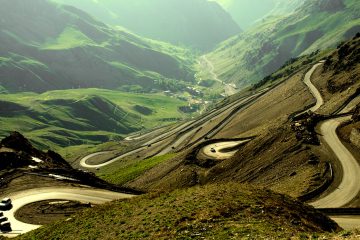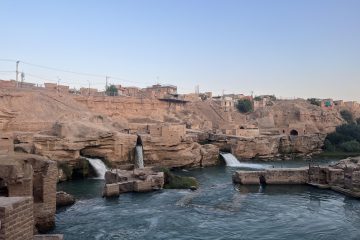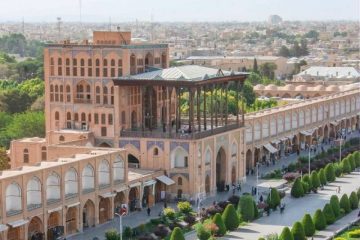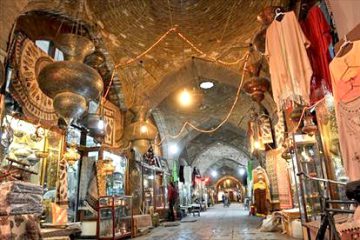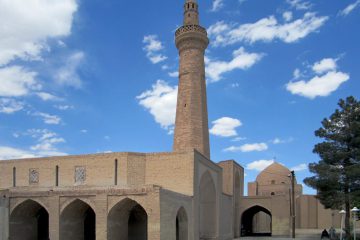
Ghasabeh Qanat
This is one of the privileges of travelling in Iran – Ghasabeh Qanat: in a tiny dusty town, far from hustle and bustle of touristy and overcrowded Isfahan and Shiraz, start walking in the channel that snakes under the desert for more than 33 km with the aid of 472 access shafts. At its beginning the channel is 300 meters under the ground! Somehow – and no one’s entirely sure how they managed this with the technology of 2,500 years ago – the shaft remains nearly level its entire length, as it transports 150 liters of water per second to this location, and from here to locations in and around Gonabad (go-NAW-bawd).
The Ghasabe (a.k.a.Qasabeh) Qanats of the town of Gonabad, in northeast Iran, are some of the oldest and largest qanats in the world, built between 700 BC to 500 BC by Cyrus the Great and other kings. In 2016 the qanats were inscribed as a UNESCO World Heritage Site called the “The Persian Qanat”.
History
Persian period
According to Callisthenes, the Persians were using water clocks in 328 BCE to ensure a just and exact distribution of water from qanats to their shareholders for agricultural irrigation. The use of water clocks in Iran, especially in the Qanats of Gonabad and Kariz Zibad, dates back to 500 BCE. Later they were also used to determine the exact holy days of pre-Islamic religions, such as the Nowruz, Chelah, or Yaldā—the shortest, longest, and equal-length days and nights of the year. The water clock, or Fenjaan, was the most accurate and commonly used timekeeping device for calculating the amount or the time that a farmer must take water from the Qanats of Gonabad until it was replaced by more accurate current clocks.
You’re Not Alone in our Best Iran group tours!
Kariz Gonabad Iran
the oldest water clock in Persia. Qanat- e Zibad- Gonabad water clock
Nasir Khusraw (1003–1077), in his book Safarnama, described the Qanats of Gonabad as the Kariz of Kai Khosrow, claiming the qanats were dug by the order of the legendary Persian king Kai Khosrow, whom some scholars[who?] believe is the same person as Cyrus the Great. According to a contemporaneous inscription, in 714 BCE Sargon II of Assyria invaded the city of Uhlu lying in the northwest of Uroomiye lake that lay in the territory of Urartu, and he noticed that the occupied area enjoyed a very rich vegetation even though there was no river running across it. In fact it was Ursa, the king of the region, who had rescued the people from thirst and turned Uhlu into a prosperous and green land. Goblot believes that the influence of the Medeans and Achaemenids made the technology of qanats spread from Urartu (in northwest Iran and near the present border between Iran and Turkey) across the Iranian plateau.
It was an Achaemenid ruling that in case someone succeeded in constructing a qanat and bringing groundwater to the surface in order to cultivate land, or in renovating an abandoned qanat, the tax he was supposed to pay the government would be waived not only for him but also for his successors for up to five generations. Following Darius’ order, Silaks, the naval commander of the Persian army, and Khenombiz, the royal architect, managed to construct a qanat in the oasis of Kharagha in Egypt. Beadnell believes that qanat construction dates back to two distinct periods: they were first constructed by the Persianse, and later the Romans dug other qanats during their reign in Egypt from 30 BCE to 395 AD. The magnificent temple built in this area during Darius’ reign shows that there was a considerable population depending on the water of qanats; Ragerz has estimated this population to be 10,000 people. The most reliable document confirming the existence of qanats at this time was written by Polybius, who states that: “the streams are running down from everywhere at the base of Alborz mountain, and people have transferred too much water from a long distance through some subterranean canals by spending much cost and labor”. The government proceeded to repair or dredge the qanats that were abandoned or destroyed for any reason, and construct new qanats if necessary. A document written in the Pahlavi language pointed out the important role of qanats in developing the cities at that time.
some contents were taken from wikipedia.
ASHURA DAY IN IRAN! Must Read Article

